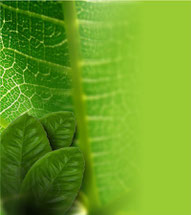Theme III.b: Micromorphological characteristics of plant drugs (vegetal drugs, herbal drugs)

Dermal tissue - epidermis
The dermal tissue is composed of the epidermis, the outermost layer that covers plant body as a protective envelope. It is
the skin that covers leaves, flowers, roots, fruits and seeds.
In typical cases, consists of a layer of cells which are joining without spaces, forming a continuous film, while allowing the exchange of substances with the environment. These cells have a cell
wall cellulose not very thickened.
The cytoplasm is sparse and is retracted toward the cell wall by large vacuoles, which may have pigments or lack thereof. They have a core of small size compared with the volume of the cell. The plastids are represented by small leucoplasts or missing entirely.
Some plants have chloroplasts in the epidermis like ferns and aquatic plants of shady habitat.
The epidermis can have stomatal, an openings through which plant exchanges gas with the atmosphere. These openings are surrounded by specialized cells called occlusive which change size and shape, modifying the diameter of the stomatal opening and thereby regulate the gas exchange.
The epidermis is coated with a film of wax called the cuticle, is waterproof, and its function is to reduce evaporative water loss through the plant surface. If it undergoes secondary growth rather than epidermis will have periderm, the tissue composed of cells almost completely waterproof (especially corky tissue or cork) who die when mature.

 Pharmacognosy´s topics - Medicinal plants
Pharmacognosy´s topics - Medicinal plants


Write a comment